Today’s topic is a perfect spring clean-up topic and came to my attention from our site search data. Pool coping is the top horizontal cap stone for the pool. For vinyl liner pools, the pool coping has several distinct styles, the most common iteration shown above, PVC bullnose coping.
Above Ground Pool Coping
Known as the ‘Top Rail’ of the pool, can also be a vinyl resin product, or stamped steel that has been electrostatically painted, or powdered coated. In most cases, above ground pool coping is not painted, but can be painted, following the process below.
Inground Pool Coping
Typically a pre-cast concrete coping stone, flagstone or brick is used as coping. In most cases, cementitious or stone coping is not painted, but can be pressure washed or lightly acid washed to improve appearance. For pre-cast coping stones that are very rough or stained, they may be painted with a pool deck coatings.
For inground vinyl pools, pool coping can take many forms, but is made with either PVC plastic or aluminum. PVC coping is not (usually) painted, but aluminum pool coping is coated and over time in the hot sun, aluminum pool coping paint can chip and peel. Plastic or aluminum coping can be painted, although plastic/vinyl coping is not intended to need paint. Some vinyl pools have a thick steel band used as coping, which requires regular repainting to prevent rust problems.
How to Paint Aluminum Pool Coping:
Aluminum pool coping paint is available online, but most any enamel paint can be used, it need not be labeled as ‘pool coping paint’, as long as it is suitable for metals. More important than which paint to use when painting pool coping, is the prep process, or the prep steps for painting.
1. CLEAN THE COPING:
With a textured sponge or scouring pad, using a mild cleanser or degreaser product like Spray-Nine®, TSP or Simple Green®. If the pool is full of water, you must be careful not to allow cleaning chemicals to enter the pool water. You can use our Tile & Vinyl Cleaner, without concern if it gets in the pool. Otherwise, use a pressure washer to remove dirt and scale and then use a rag with to wipe-on a solvent like paint thinner, acetone or Xylene to remove oils and grease. Any peeling or flaking paint or coatings should be scraped and sanded smooth.
2. SCUFF & SAND:
For previously painted surfaces, the surface should be roughened to improve the bond between old paint and new paint. Sanding also exposes fresh paint that is unweathered and uncoated with atmospheric oils and microscopic scale. For aluminum pool coping, use a Scotch-Brite® scouring pad. If the common green colored pad is not rough enough, use the maroon color pad, aka general purpose pad, which is rated at about 300-400 grit. Scotch-Brite® also makes a ceramic disc brush that can be used with a cordless drill. Abrasive flap wheels can also be used for cleaning or paint removal.
3. ETCH & PRIME:
For bare aluminum surfaces (unpainted, down to bare metal), you should use an aluminum primer or etching primer, both sold in spray or roll-on formulas. Two coats of the primer is recommended, after a thorough cleaning and followed by a light scuffing. Priming is only necessary on bare aluminum – painted areas can be simply cleaned and sanded well. If you have a mix of painted and unpainted coping areas, use aluminum primer or etching primer on the bare areas only, although over-spray onto painted areas is not a problem.
4. PAINT THE COPING:
You can paint vinyl pool coping with spray cans (my preference), or you can use a small 4″ paint roller to coat aluminum coping. If using spray primer or spray paint for coping, you may want to use painter’s tape to protect the concrete deck and the liner beneath the coping from overspray. Some paint might be blown into the pool water. You can float newspaper on the surface to catch the over-spray, or it can be removed later, by scrubbing the waterline with a textured sponge or Scotch-Brite® pad.
Painting Steel Strip Coping:
For inground vinyl pools with a heavy steel pool coping, or a thick band of steel that the concrete deck is poured up against. The problem with steel is iron, and the problem with iron is rust. When the paint gives way to rust, it can drip down onto the liner, and during rain adds iron oxide to the pool. Maintenance every 5 years or so will prevent most problems and keep the rust to a minimum. Saltwater pools may have more difficulty with oxidation, if so consider a switch back to tablets.
The prep involves Naval Jelly that can be used to dissolve most of the rust from a steel coping strip. The surface can then be ground-down with an orbital grinder, wire wheel or abrasive flap wheel. This process is best done when the pool is empty and when the liner is being replaced, otherwise extreme care must be taken to prevent steel shavings and rust particles from falling into the pool. You can tape plastic sheets to the liner, which will float on the water to catch specks and drips.
The paint for a steel coping band starts with a good rust inhibiting primer. Allow to dry and then scuff slightly before adding a paint meant for use with rusting steel. Krylon® Rust Protector or Rust-Oleum® paints are good paints for rusty steel surfaces, and can be sprayed or rolled to apply, with a second coat recommended.
Painting Pre-Cast Pool Coping Stones:
For concrete pools (or vinyl pools) that have a pre-cast plaster coping stone, and also for brick pool coping, a pool deck coating can be used to apply a uniform color to coping stones, or to match other patio tones. Before painting concrete coping stone however, give them a good pressure washing, and perhaps a light acid washing, to determine if painting is still needed. Mold & mildew can be removed with a light chlorine wash, or scrubbing with a chlorinated cleanser.
The prep for painting coping stones is the same as prep steps to paint a pool, or coat the pool deck. Start with cleaning with a good degreaser that is not sudsy, such as TSP (Tri-Sodium Phosphate), followed by a light acid wash to remove mineral scale and etch the surface slightly. Use a flower watering can to pour the chemical over pre-moistened coping stones, brush briefly and then rinse thoroughly with copious amounts of water. Allow the stones and grout to dry fully for several days before painting. Use painter’s tape and plastic film or paper to cover the tile, water and pool deck.
Cool! Pool Deck Coating, or our Pool Deck Paint, can be used to seal, smooth and tone your concrete coping stones. Concrete pool coping stones an also be sealed, using our clear Pool Deck Sealer product. This will keep coping stones looking great, as it sheds dirt and water, and also prevents salt corrosion for pools in coastal areas or pools with saltwater chlorine systems.
Don’t…
- Use Steel Wool to clean, shavings can fall in the pool and rust the vinyl.
- Use household cleaners or strong acids to clean the coping, which could damage the liner.
- Use cleaners that will drip into the pool water, adding phosphates or other undesirable chemicals.
- Use a grinder on Steel coping, which will send steel shavings to rust on your vinyl liner.
- Use Duct tape to tape off – use masking tape or painter’s tape, which removes easily.
- Damage your liner track beneath the coping, work around it carefully.
Do…
- Use a pressure washer for cleaning coping stones and vinyl pool coping.
- Use Etching Primer or Aluminum Primer on BARE aluminum, painted coping needs no primer.
- Clean with a degreaser to remove oils, and an acid to remove scale (concrete coping).
- Consult the weather beforehand for a dry, warm and calm forecast.

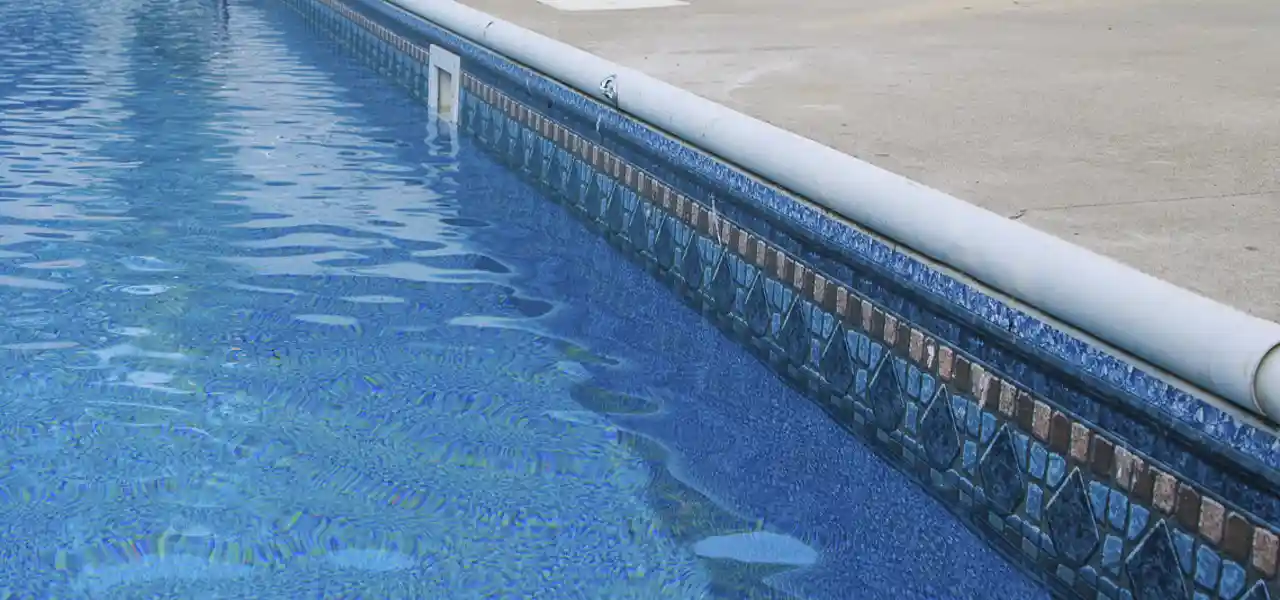
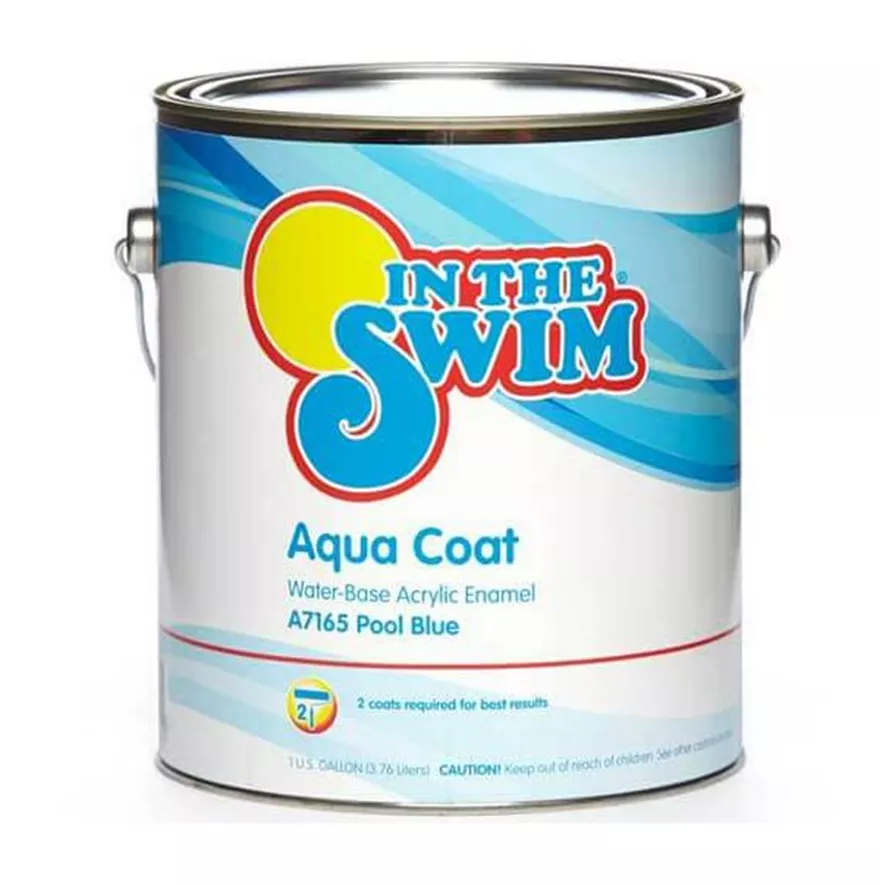
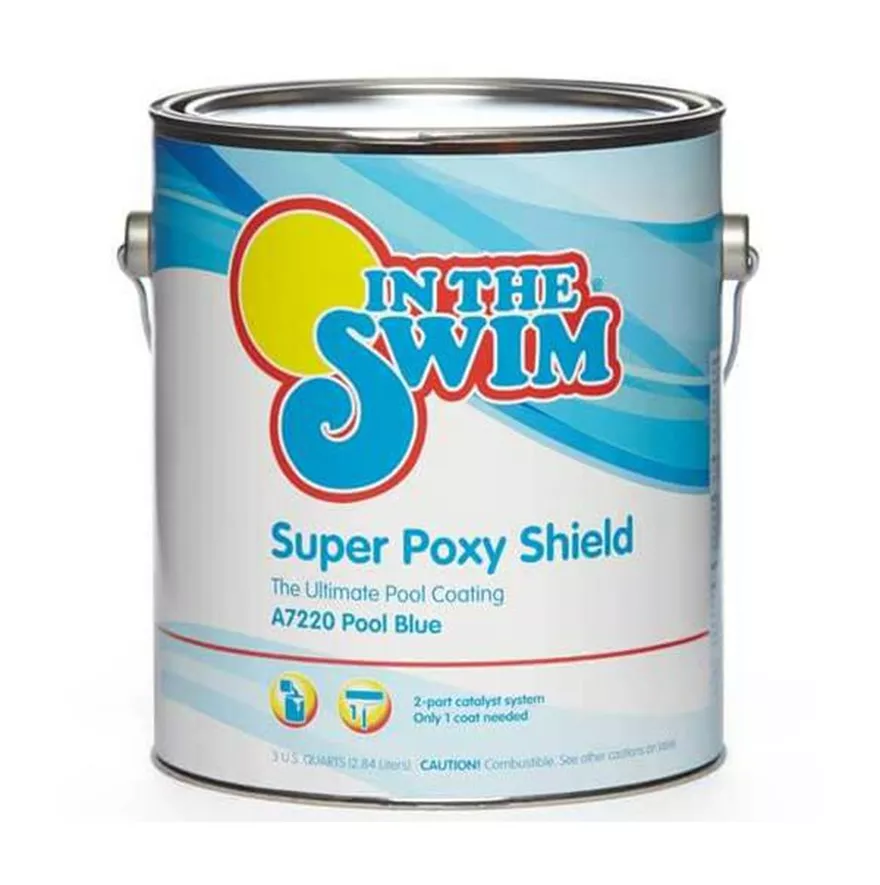
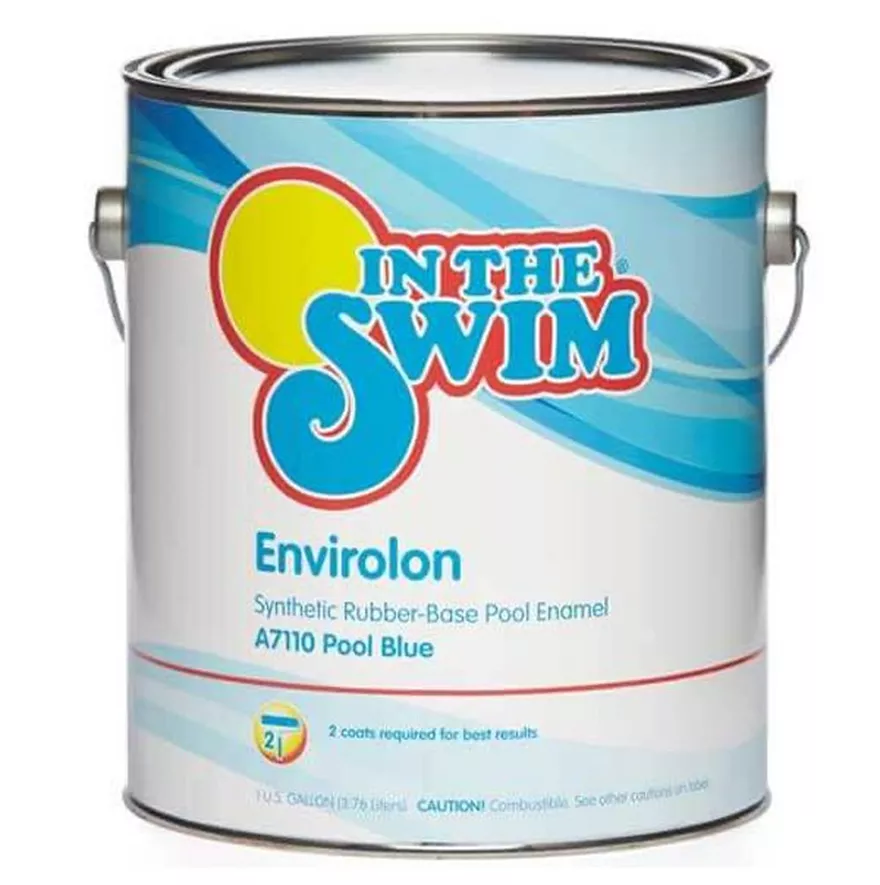

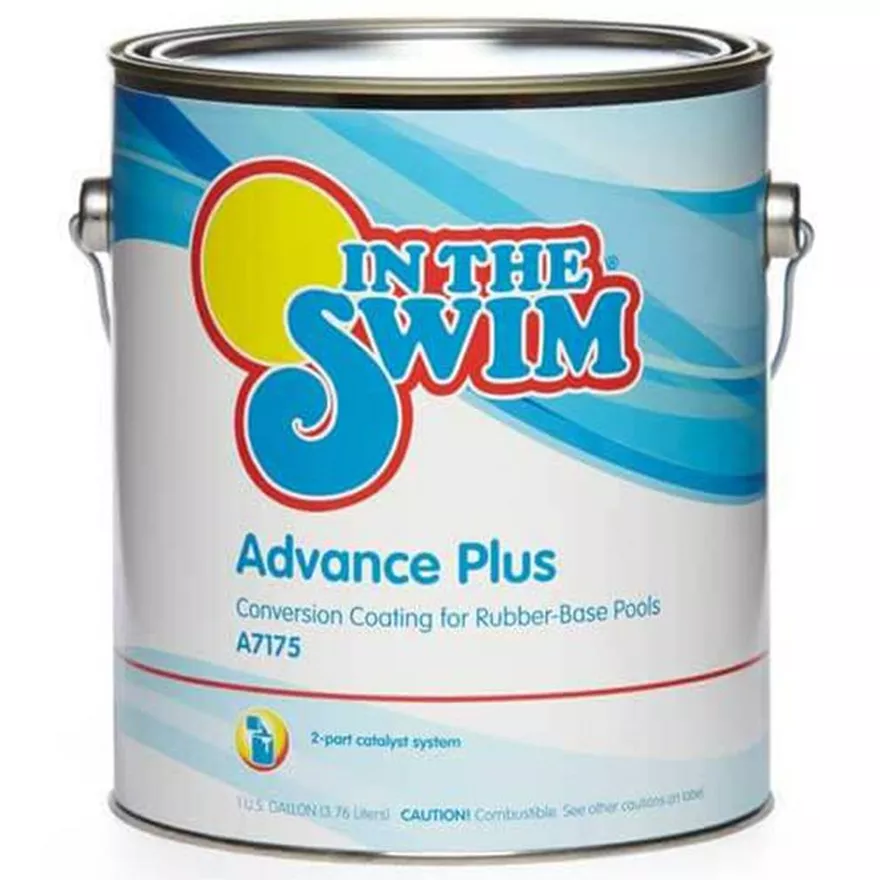
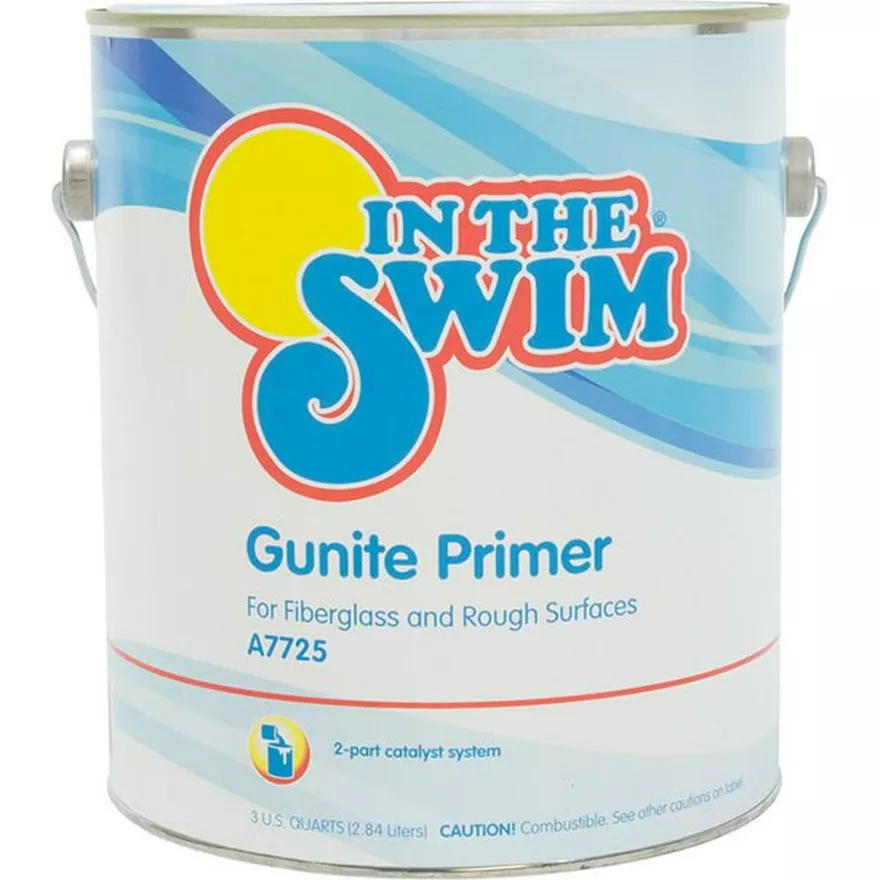
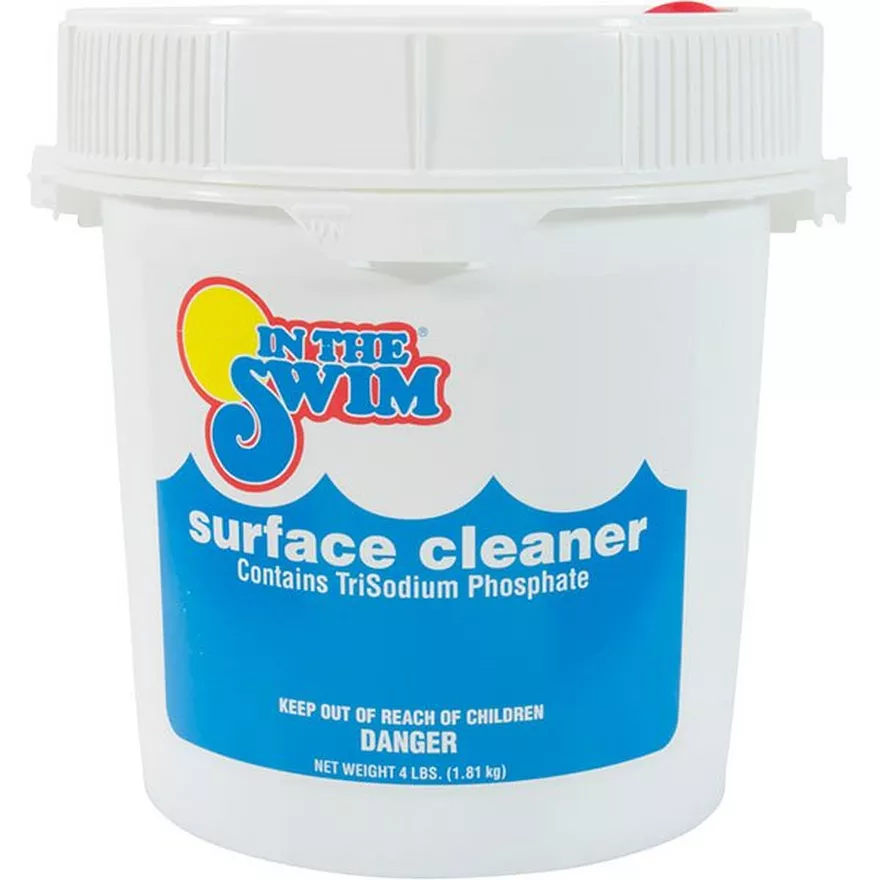

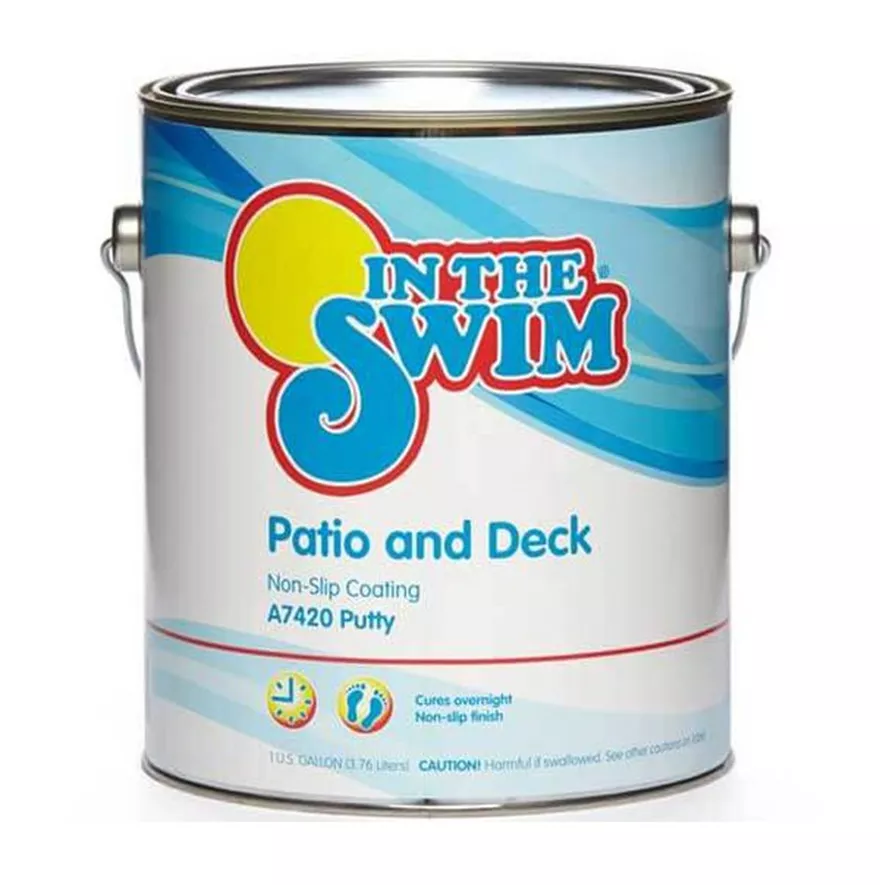
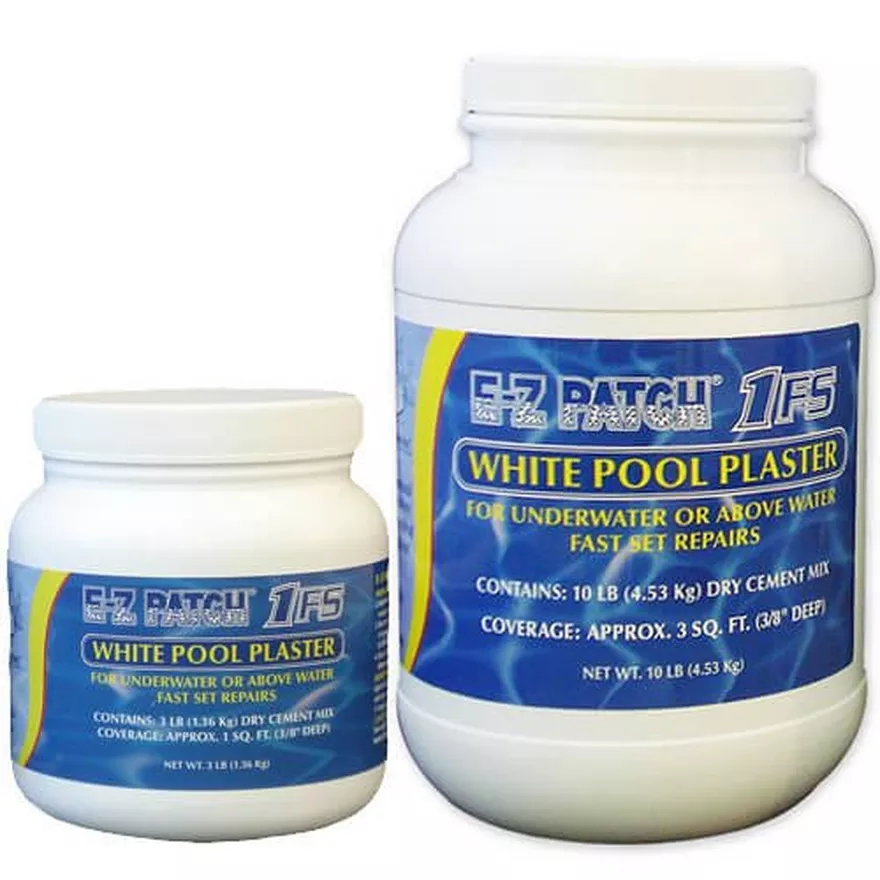
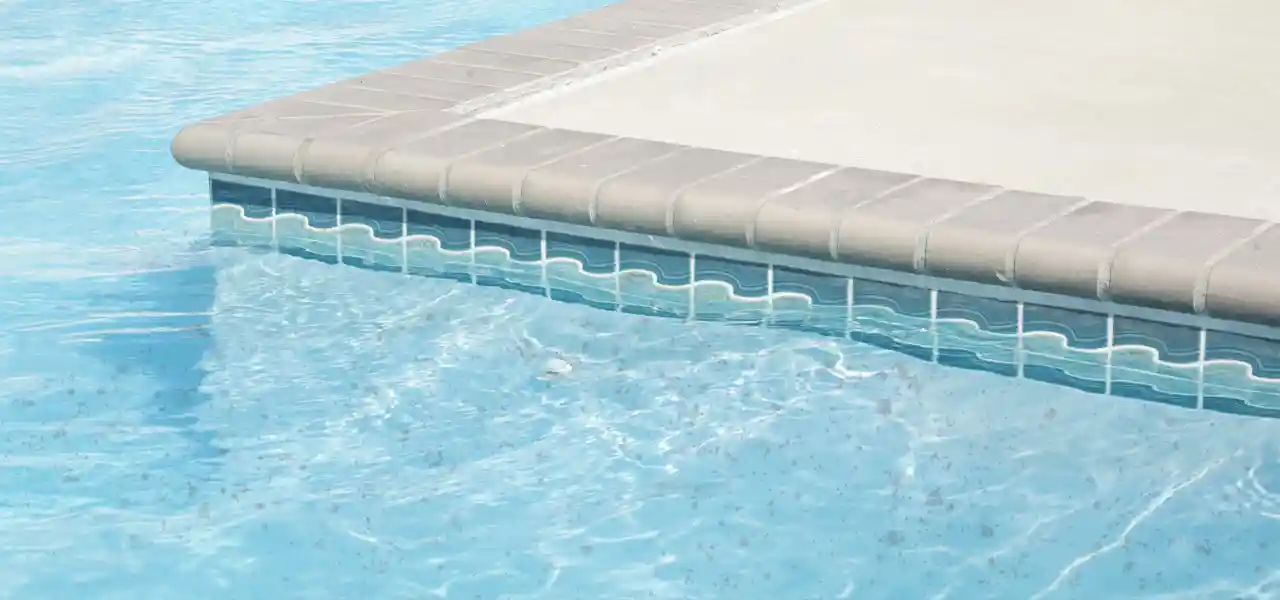
How to remove spray paint from pool liner?
Hi Kathleen, found these tips online:
1. Heat the paint. Sometimes the use of a blow-dryer or heat gun can loosen paint enough to scrub away with a scrub brush or sponge or even a scraper.
2. Apply acetone. Acetone is a chemical used to remove nail polish. Apply to a cloth and then place on the paint stained areas.
3. Try a degreaser. A degreaser or spray cleaner can be applied directly to the pool liner. Allow it to soak for several minutes, and then the paint may scrub off with a scrub brush or sponge.
4. Soak in vinegar. Vinegar is a natural cleaning agent. Soak the liner in vinegar for several hours to loosen the paint from the vinyl.
5. Remember it may take several methods or cleanings. If one method does not remove the paint, then you may try another. You may even want to attempt the same method several times.
The freshly poured cement coping around my pool was painted with H & C Exterior COLORTOP Solvent-Based
Solid Color Concrete Sealer, Tile Red paint. Now the paint is flaking off all around the pool. It was painted in November of 2019. We had it repainted again about 3 weeks ago and it is flaking worse than the first time. Can you please advise me on what to do? Thank you.
Hi Nancy, when paint does not bond to painted concrete, it is either oils, scales, moisture or incompatible paint types. The one used last year, was a solid color concrete sealer, which may be incompatible with what was used this year. If it was the same, and what is flaking up is not so much the new paint, but the old paint (still) peeling up, then that will need to be dealt with, but now is more difficult with another coat on top. I think I would rent a piece of machinery to strip the paint, or do it chemically with scrapers, but remove it down to the bare concrete, using a walk behind scarifier, or sandblasting (an awful mess), to get back to a good surface. Then choose a different product, I would think 🙂 You could use Deck Paint, or a Concrete Stain could be a nice option as well.
pvc pool coping